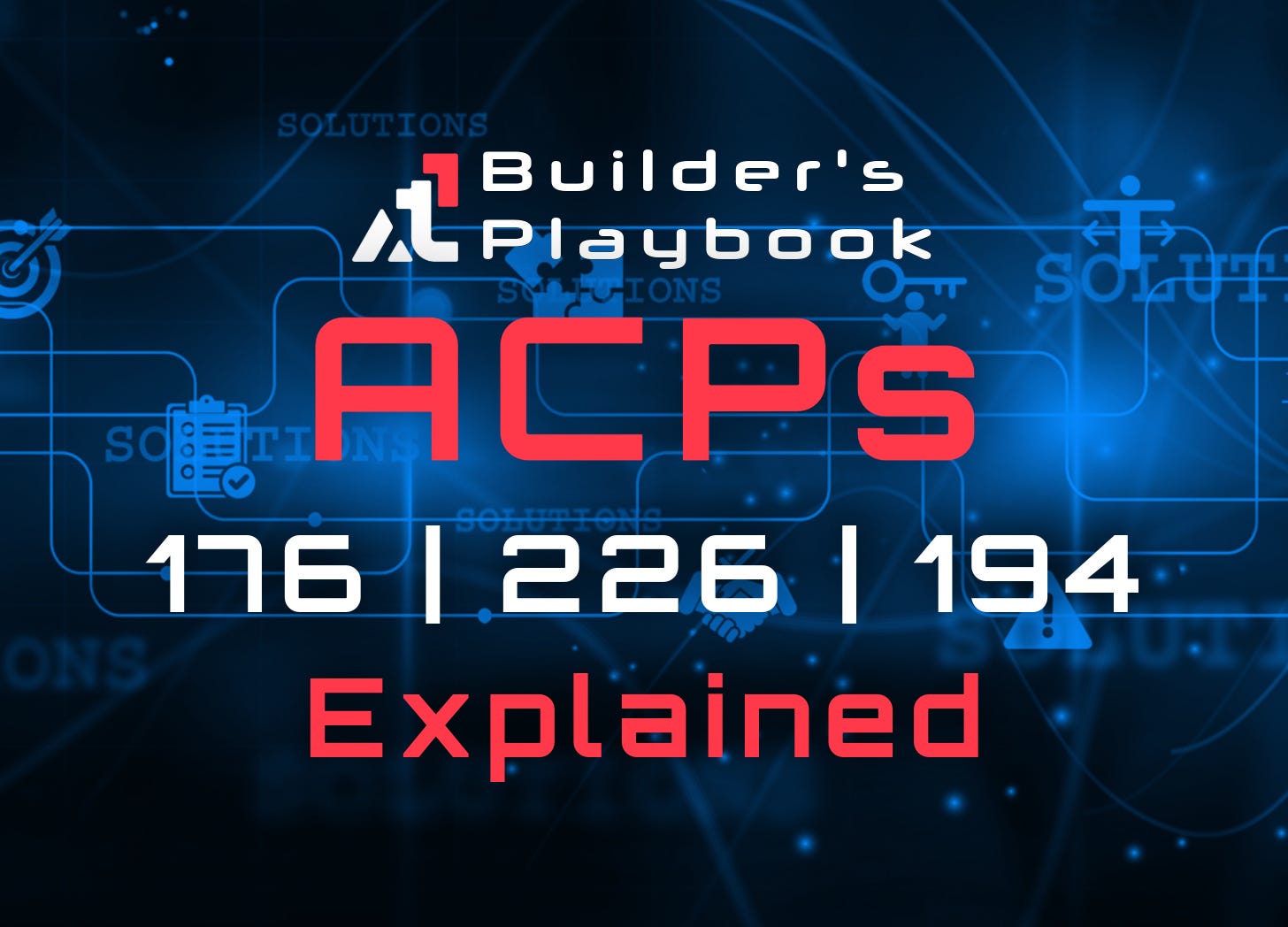A Deep Dive into Three Game-Changing Proposals
Avalanche’s coordinated network upgrades deliver dynamic scalability, parallel transaction processing, and millisecond-level precision to create a high-performance, decentralized future
For years, a fundamental challenge has defined the limits of blockchain technology: The Blockchain Trilemma. This core concept underscores the immense challenge of achieving three critical properties simultaneously: scalability, security, and decentralization.
Think of it like a three-legged stool. If you try to strengthen one leg, you often have to weaken another. For example, a network might be highly scalable but at the cost of being less decentralized, or it might be very secure but too slow to be widely used.
Avalanche tackles the Blockchain Trilemma head-on with a strategic series of network upgrades. These Avalanche Community Proposals (ACPs) are not isolated fixes; they are a coordinated effort to enhance scalability and performance without compromising on security or decentralization. In this blog, we will explore three cornerstone proposals, ACP-226, ACP-194, and ACP-176, that work in concert to mitigate the trilemma's inherent trade-offs. Let's break down how each one contributes to this mission.
ACP-176
ACP-176, known as Dynamic EVM Gas Limits and Price Discovery Updates, overhauls how the network manages its capacity and fees in real time.
Previously, the network operated like a highway with a fixed number of lanes, where sudden traffic spikes could cause congestion and unpredictable fees for everyone. ACP-176 transforms the C-Chain into a "smart highway" that adapts to demand in real time. It makes the following changes:
Replaces the fixed minimum base fee, providing a more seamless and predictable fee system.
Allows validators to dynamically adjust the network's gas target, which gives them more control.
Allows the network to gradually and safely expand its capacity over time, ensuring it can handle rush hour traffic without clogging.
Enables the network to scale as hardware and software improve without a disruptive upgrade.
The result is a C-Chain that can scale organically to meet demand, growing alongside hardware and software improvements without needing disruptive hard forks. By adopting this proven P-Chain-inspired model, the network becomes faster, cheaper, and ready to support the future of Web3.
ACP-194
ACP-194 reimagines the core of transaction processing on Avalanche by decoupling consensus from execution. This proposal, formally known as Streaming Asynchronous Execution (SAE), is engineered to unlock a new level of network performance.
Previously, the network processed transactions sequentially, much like a single-lane toll booth where each car must pay (consensus) and then merge onto the highway (execution) before the next car can approach. This created a bottleneck.
SAE transforms this into a modern, multi-lane system by separating these steps. This enables:
True Parallel Processing: The network can process multiple blocks simultaneously across different chains, dramatically boosting throughput.
Reduced Latency: By no longer waiting for execution to finish before starting consensus on the next set of transactions, the network feels faster and more responsive.
Enhanced Resilience: The system can now absorb large bursts of activity without stalling, ensuring consistent performance even during periods of high demand.
In short, ACP-194 allows the network to verify new transactions while still finalizing previous ones. This "two-lane" approach makes processing smoother, cuts down on delays, and prepares Avalanche for the future of high-speed decentralized applications.
ACP-226
Formally known as Dynamic Minimum Block Times, this proposal replaces the Avalanche’s current block production rate-limiting mechanism with a dynamic minimum block delay, measured in milliseconds, determined by validators.
Imagine Avalanche’s network as a road where transactions are cars. Without ACP-226, there's no clear stoplight. Cars can get too close together, causing instability. The system also can't adjust to traffic flow without a full-blown construction project (a network upgrade).
ACP-226 fixes this by adding a smart traffic light. It introduces a dynamic minimum delay between blocks to:
Ensures blocks can’t be produced too rapidly, improving stability.
Allows sub-second block times as performance improves.
Eliminates reliance on the “block gas cost” mechanism.
Provides a smoother upgrade path (no hard-coded limits).
Once this update is live on the C-Chain, it will introduce a new minimum delay floor of 100ms. The network will start with the same effective delay of approximately 2 seconds that users experience today. From there, validators will be empowered to dynamically fine-tune this delay, gradually adjusting it to optimize for live network conditions and peak performance.
Final Thoughts: A Unified Vision for Performance
As we've seen, ACP-176, ACP-194, and ACP-226 are not standalone improvements, but are deeply interconnected pieces of a larger strategy.
ACP-176 lays the foundation by making Avalanche’s “highway” adaptive, ensuring capacity and fees scale smoothly with demand.
ACP-194 then redefines how traffic moves across that highway by separating consensus from execution, enabling true parallel processing and responsiveness.
ACP-226 functions as the network's smart traffic light, providing the fine-grained control over block timing required to accelerate safely toward sub-second performance
Together, these proposals form a coordinated upgrade path: dynamic scalability, efficient execution, and millisecond-level precision. Instead of choosing between scalability, security, and decentralization, Avalanche integrates these enhancements to push the boundaries of what a decentralized network can achieve.
In unison, ACP-176, ACP-194, and ACP-226 bring Avalanche closer to a future where blockchain is not only powerful and secure but also feels as instant and seamless as the digital services we use every day.
Dive into the Avalanche ecosystem today! Download the Core Wallet and unlock a world of seamless DeFi, NFTs, and more.






Awesome blog 🔺